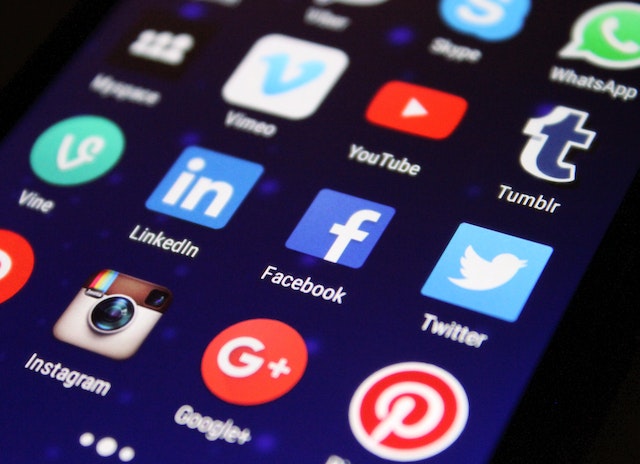Today’s society has become increasingly digital in nature, prompting businesses to leverage additional technology and online services in their operations. Specifically, some businesses have grown more reliant on the internet and social media platforms to market their products and services, allowing them to connect with a wider range of customers.
While engaging in digital strategies may pose various benefits, doing so also carrier media liability exposure. After all, any business that posts or shares content – physically and online – could be held liable for third-party harm or damage that may result from such content. What’s more, media liability losses are on the rise, both in cost and frequency; industry research recently revealed that these losses can reach up to $150,000 per incident. Further, this research found that most business executives plan to increase their social media budgets in the coming years, generating additional avenues for media liability losses.
Although some businesses assume they will be protected against their losses under their commercial general liability (CGL) coverage, particularly against personal and advertising injury incidents, CGL policies often contain media-related exclusions. Therefore, it’s important for businesses to consider media liability insurance to prevent possible coverage gaps. This article offers more information on media liability insurance, identifies which businesses need such coverage and explores potential claim scenarios.
Media Liability Insurance Explained
Media liability insurance is considered a specialized type of errors and omissions coverage. It can provide protection for costs related to businesses being held responsible for third-party harm and damage – actual or alleged – stemming from posted or shared content (e.g., videos, articles, blogs, photographs, illustrations, music, films, advertisements and short-form promotional copy). Covered incidents under media liability insurance may include the following:
- Libel, slander, product disparagement and other forms of defamation
- Invasion of privacy (e.g., intentionally intruding the solitude or seclusion of another party, publicly disclosing private information or misappropriating an individual’s name or likeness)
- Infliction of emotional harm on another party (e.g., posting content that distresses certain individuals or is deemed unsuitable for some audiences)
- Copyright and intellectual property infringement, piracy, plagiarism and other instances of posting another party’s content without credit or permission
- Breach of professional duty, confidentiality and licensing agreements
- Professional negligence (e.g., including or omitting information within content that leads to the false portrayal of a situation, individual or organization)
Following these incidents, media liability insurance can provide coverage for policyholders’ legal defense costs and potential settlements or payouts to third parties. It could also cover third parties’ legal fees, investigations from regulators or other authorities, content revision and restoration costs (e.g., recalling content, correcting content and reprinting or reposting content), and public relations and crisis management expenses.
However, media liability insurance generally excludes losses related to fraudulent or dishonest acts, employment practices, patent infringement, property damage, bodily injuries, faulty products or services, breach of contract, and allegations from parties with controlling interest in policyholders’ operations.
Which Businesses Need Media Liability Insurance?
Any businesses that create or provide physical or digital content may need media liability insurance. Such businesses include the following:
- Brand development, public relations, marketing and advertising agencies
- Social media and editorial consulting firms
- Record labels and other music companies
- Market research and telemarketing organizations
- Graphic design, photography, videography and blogging companies
- Television and radio broadcasting firms
- Copywriting, proofreading, printing and publishing organizations
- Media production companies, including those that provide streaming services
- Consulting firms involved in publishing white papers or training materials
- Nonmedia companies that frequently post or share content on digital platforms (e.g., websites and social media)
Media Liability Insurance Claims Scenarios
Here’s an outline of possible claim scenarios that media liability insurance could cover:
- A food blogger posts a negative review of a popular restaurant online, accusing the restaurant of using spoiled ingredients. The restaurant sues the blogger for libel, asserting that this accusation is false and has resulted in lost customers.
- A marketing agency creates a video advertisement and shares the advertisement on social media. A music company sues the agency for copyright infringement, alleging that it used one of the company’s songs in the advertisement without getting it licensed.
- A radio broadcast befriends a celebrity to gather “dirt” for an upcoming gossip segment on their show. Unaware of the broadcaster’s intentions, the celebrity divulges private information. The broadcaster then reveals this information on their show. Upon release of the show, the celebrity sues the broadcaster for invasion of privacy.
Conclusion
It’s evident that media liability exposures can lead to significant losses for businesses. Especially as a growing number of businesses utilize digital strategies and invest in social media, it’s critical that they secure proper coverage for potential media liability incidents. Businesses should consult trusted insurance professionals to discuss particular coverage needs. For further insurance guidance and solutions, contact us today.
